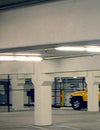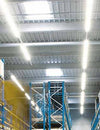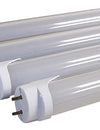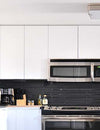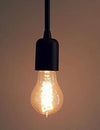
With advances in LED development, the LED lighting market is growing. Here are some of the LED trends to look out for as we enter the New Year.
LED Adoption - Room for Growth
The market for LED lighting is growing steadily. In the consumer market, sales of Residential LED lighting are now greater than sales of all other lighting technologies combined, yet nearly 60 percent of U.S. residential sockets still contain a less efficient bulb. With just under 10 percent of commercial and retail facilities in the U.S. converted to LED, it’s clear that many companies are missing out on the benefits of Commercial LED lighting.
Increased Efficiency
LED Light fixtures are already 70% more efficient than comparable conventional systems and offer a much higher light efficiency, up to 160 lumens per watt. Advances in LED design, power supplies, heat management, and other components are driving that efficiency much higher. Moving forward, the efficiency and output of LED technology is expected to improve by 3% to 5% every year.
Lower Cost of Conversion
LED lighting costs have declined 80% in the past five years, reducing the payback time of conversion to LED lighting. LED fixtures will not only become more efficient and cost less to produce, but we will likely see a sharp increase in demand as more companies recognize the energy and maintenance cost that industrial LED lighting provides. More demand will drive faster time to market for new innovations, greater efficiency in production, and competitive pricing.
More Color Choices
Today’s LEDs bulb makers are creating bulbs or LED strips that offer millions of color options - up to 16 million. You may also be able to change the color and warmth of your lighting without changing bulbs. There are now tunable white LED lights that allow you to create a cooler white light or warmer light depending on your need and mood.
Smart Lighting Fixtures
The latest lighting trends can do more than just brighten up our spaces. Because of their instant-on capability, LED fixtures are ideal for incorporating smart sensors that can help reduce energy use by an additional 50%. By adding occupancy controls, which turn the lights on only when there’s movement in the area, or daylight sensing controls, which automatically adjust light output to compensate for natural light, industrial LED fixtures can substantially reduce the hours of lighting needed in a facility.
Today’s LED Lighting can be controlled by a smartphone or tablet. Wireless control systems now offer remote operation and monitoring of all fixtures through a web-enabled central management system that collects data from sensors and cameras.
Human-centric Lighting
This trend is all about how lighting can be used to improve our vision, productivity, and well-being. Many businesses have installed systems so they can tailor light levels in their stores or factories in such a way that it can optimize employee productivity and safety.
LED Horticultural Lighting for Faster Growth and Better Crops
Horticulture lighting is one of the fastest growing market segments in LED lighting. LED-based horticultural lighting can deliver even bigger advantages for commercial growers by introducing additional wavelengths that increase photosynthetic response. LED lighting products also have the unique capability of not only being able to provide a precise output spectrum, but also to be "tuned" to the optimal spectrum for different plant life cycle phases. Radiated heat is greatly reduced with LEDs, which gives growers more control over the climate inside greenhouses and prevents burning and drying of plants.


